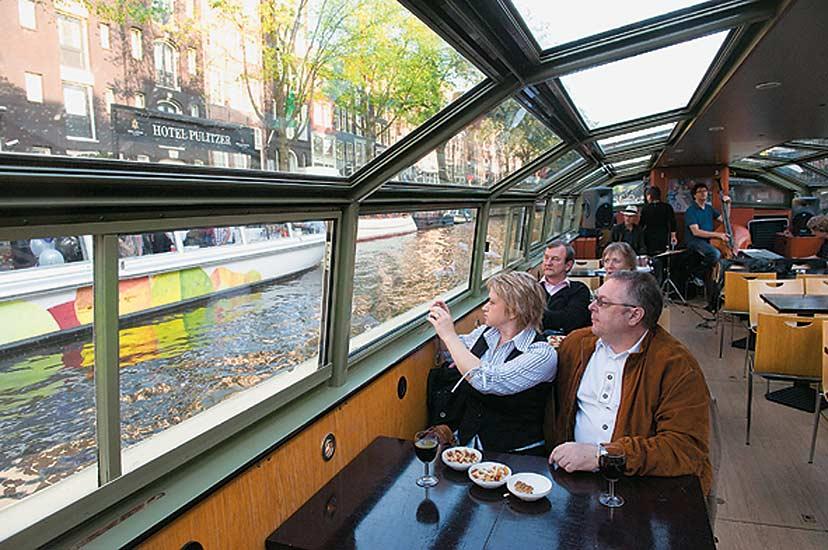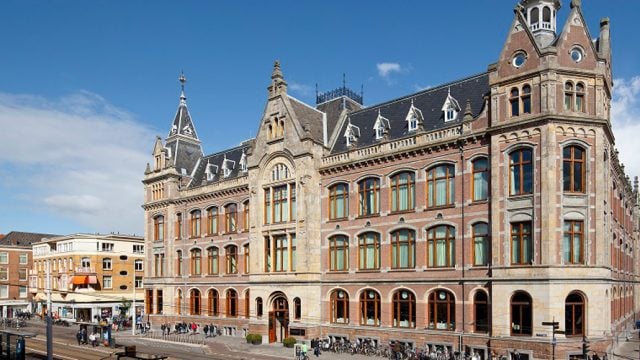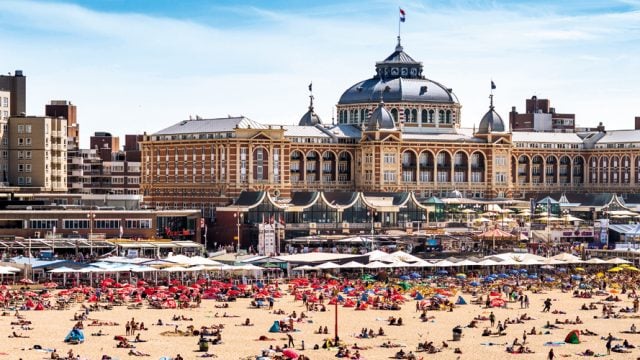From the manner in which the concierge staff at Amsterdam’s classy, canal-front Hotel Pulitzer arched his eyebrows,
“And what exactly do you want from a, um, coffee-shop?” he asked.
Only then did realisation kick in, with the full force of a Eurail locomotive. I was in Amsterdam, of course, where ‘coffee-shops’ didn’t dispense caffeinated beverages, but small doses of soft drugs. And in enquiring of the concierge if the stately Hotel Pulitzer, named after a grandson of the iconic Joseph Pulitzer, had a ‘coffee-shop’—when I ought to have said ‘café’—I had evidently dropped a thunderous clanger and given grievous offence.
It wasn’t the only time during a whistle-stop tour of Amsterdam last month that I discerned a manifest attempt among stakeholders in the city to disassociate themselves from the symbols of laissez-faire libertarianism—from drug use to prostitution—that have so endeared it to millions of tourists from all over the world. After a splendid dinner at an upscale restaurant in Amsterdam’s Old Town, I asked our host, Machteld Ligtvoet of Amsterdam Marketing, what manner of post-prandial amusement she had lined up for us. Would she, I ventured in jest, arrange for a walkabout through the nearby Red Light District, home to the famous ‘window brothels’—which are in some ways considered a quintessential ‘cultural heritage’ of Amsterdam?
“Never heard of it,” said Machteld, tongue firmly in cheek. “I don’t know what you’re talking about.” (Chuckle!)
It’s all part of an ongoing effort to reinvent Amsterdam by gradually ‘gentrifying’ the Red Light District and easing out the coffee-shops with an emphasis on cracking down on crime. Project 1012 (named for the postcode of the city centre) envisages that over 10 years, the number of ‘window brothels’ and coffee-shops in the district will be halved. Zoning restrictions will apply, limiting the geographies in which such establishments can operate. But, as always happens with these things, a section of Amsterdammers resent such interventions as violating the spirit of the city’s tolerance and respect for individual freedoms.
That debate will continue awhile, but this year marks something of a momentous milestone in Amsterdam’s effort to rebrand itself as an art and cultural hub of Europe. For one thing, this year marks the 400th anniversary of the Canal Ring, the 14-kilometre network of waterways that so characteristically define the city and which in 2010 was listed as a Unesco World Heritage Site. All along the canals, the elegant homes and erstwhile warehouses and even houseboats have been converted into living ‘museums’ showcasing vibrant art.
Of course, a country that boasts of a rich tradition of artistry, particularly during its Golden Age during the 17th century, and which is home to Rembrandt, Van Gogh and Vermeer, doesn’t have to hardsell its art-cred. We ventured to the Rijksmuseum, which reopened this year after extensive renovation, and gazed in wonderment at the exhibits in the European Masters Gallery. But I was there particularly for one exhibit: The Night Watch, arguably Rembrandt’s most famous work, which depicts a civic militia group heading out for its nocturnal peace-keeping rounds. However long one may admire the artwork, Rembrandt’s fascinating use of light and shadow, which invests the painting with the perception of motion, never ceases to amaze.
Yet, for all his fame and fortune, Rembrandt was buried in an unmarked grave—in Westerkerk church, where we proceeded next. The liberal Protestant church, built in 1631 in classical Dutch Renaissance architectural style, is spartan in its simplicity, which is striking given that it was built at a time of immense prosperity in Amsterdam: it has no stained-glass work, not even an altar. But—and this is illustrative of the liberalism that suffuses the space—the church became one of the venues for the showcasing of art as part of the Chambres des Canaux celebration to mark the Canal Ring’s 400th jubilee.
Early one morning, we headed out to FloraHolland, on Amsterdam’s outskirts, to witness a fascinating ‘Dutch auction’ of flowers. The Netherlands produces nearly 70 per cent of the world’s commercial flower output, and the auction at FloraHolland is a symbol of Dutch ‘flower power’ in action: some 20 million flowers (and two million plants) are sold everyday, and the auctions here, where prices get lower as the clock ticks down, set the benchmark for flower prices around the world. The warehouse here is so big that workers zip around on motorised trolleys, carting crateloads of brightly hued and fragrant flowers, which are flown within hours of the auction all over the world, still farm-fresh.
To leave Amsterdam without seeing windmills and dykes seemed a shame, so at break of dawn we went to the suburban windmill village of Zaanse Schans, where a showcase community of villagers use wind power to grind grain, spices and pigments (that—who knows—Rembrandt himself may have used in an earlier time).
A light rain fell over us in the early morning light, and a resident black cat kept us company for much of the way, rubbing herself against our legs seeking tactile comfort. Five colourful windmills stood silhouetted against the dawn skyline, their arms akimbo, like subjects in a Ruisdael painting.
It was a magical moment, one that encapsulated many elements of a uniquely Dutch experience—from water to windmill to scenic beauty that, in a long-ago time, inspired the Dutch Masters. I was dizzy with delight, as if I’d inhaled something potently psychotropic. But there just isn’t enough cannabis in the world that would have induced me to trade away that moment.
The information
Getting there
KLM (klm.com) and its code-share partner Delta Airlines fly 14 weekly direct flights (from Delhi and Mumbai) to Amsterdam. I flew on KLM’s newly introduced World Business Class, complete with flatbed and other hedonistic indulgences (see p. 22). Business-class return fares start at around Rs 186,000; round-trip economy fares start at about Rs 65,000. Jet Airways, Etihad, Emirates offer cheaper options, but with one stop each.
Where to stay
I stayed at the Hotel Pulitzer, a canal house Starwood hotel that dates back to the 17th century, the Golden Age of Dutch history. Rooms start at € 300 a night (€ 1 = Rs 85 approx.), but canal-view rooms start at € 390 a night. The hotel is located close to the Old Town, and is within walking distance of the Rijksmuseum, the Van Gogh Museum and the entertainment district. See pulitzeramsterdam.com. Amsterdam offers a range of accommodation options, from budget to ultra-luxury.
What to see & do
Go for walks, ride bikes, go on canal cruises. Amsterdam is also home to world-class museums, quirky festivals, trendy restaurants and a vibrant nightlife.
Keytours Excursions (keytours.nl) offers a variety of canal cruises: the plain-vanilla cruise, which lasts an hour, is priced at € 12.50; a 90-minute cruise costs € 14. It also offers cocktail cruises (€ 35; 2 hours) and dinner cruises (€ 75; 2.5 hours).
The recently renovated Rijksmuseum (rijksmuseum.nl/en); open 9am-5pm daily; adult ticket: € 15) is a must-see, even if just for the European Masters Gallery. The Van Gogh Museum (vangoghmuseum.nl; open 9am-5pm until December 31; until 10pm on Fridays; adult ticket: € 15) has the world’s largest collection of paintings by the artist.
The Amsterdam Light Festival gets under way on December 6 and runs until January 19. Last year’s festival was spectacular; this year’s looks to top that with a Christmas Canal Parade on December 21 and a Light My Ride parade (with more than 500 participants on decorated bicycles, rollerblades and skateboards).
Top tip
Get yourself an I amsterdam card (iamsterdam.com), which gives you free canal cruises, free entrance to museums and free access to public transport, and helps you save big. A 24-hour card costs € 42; a 48-hour card costs € 52.
canal cruises
Leave a Reply
You must be logged in to post a comment.





